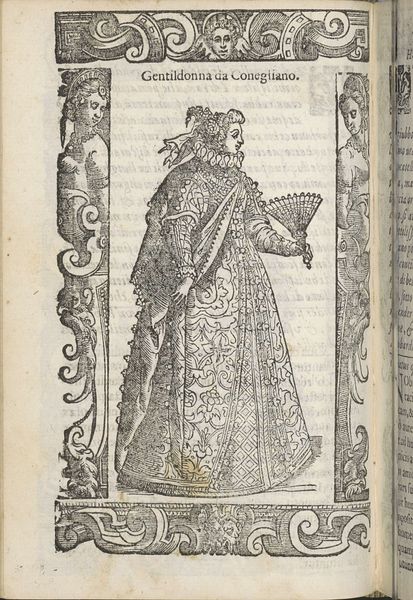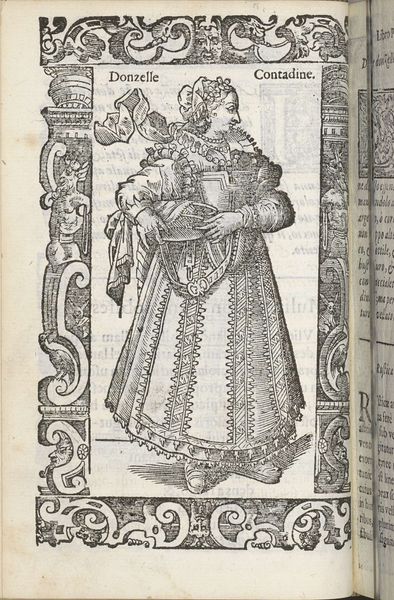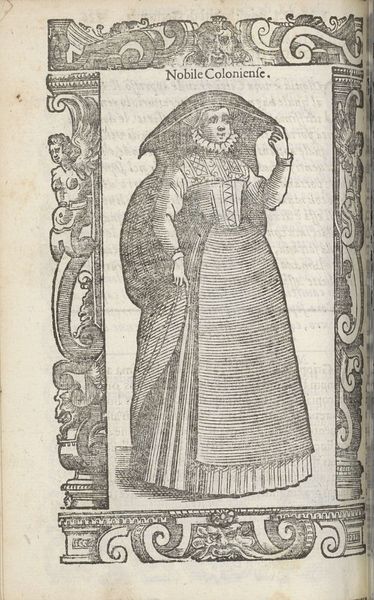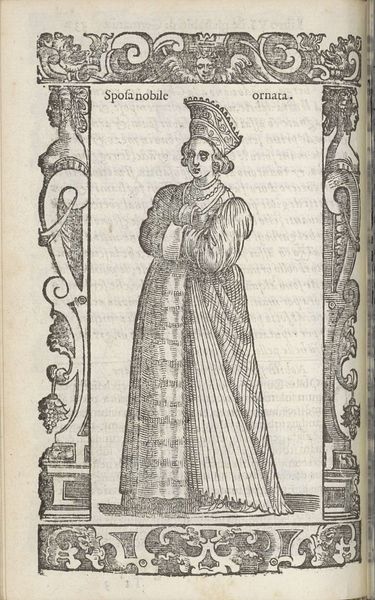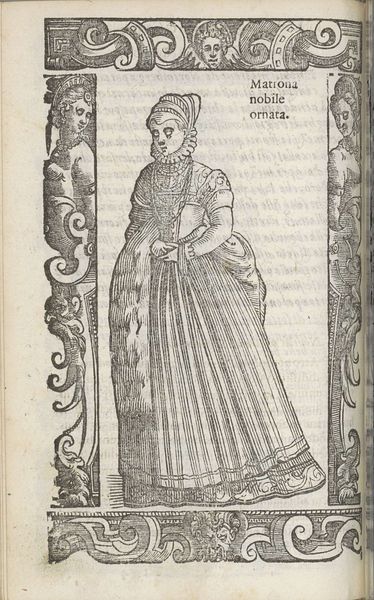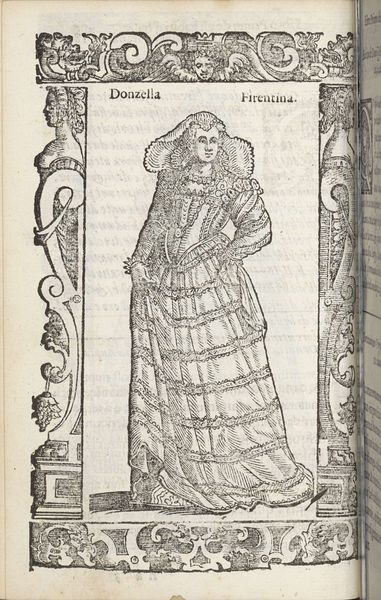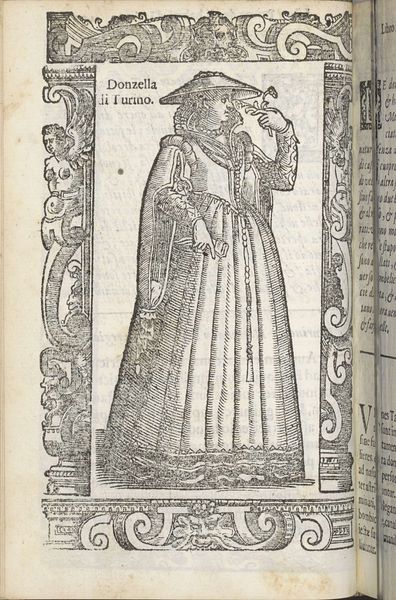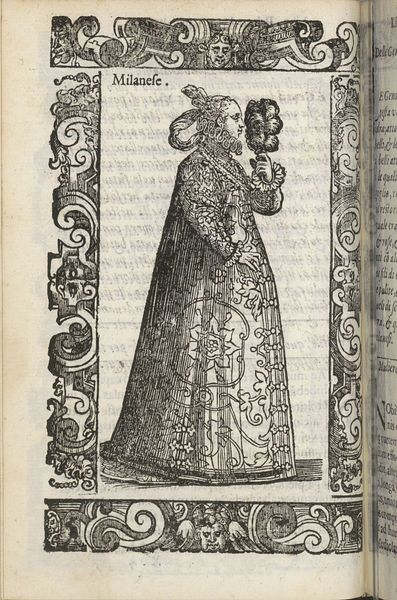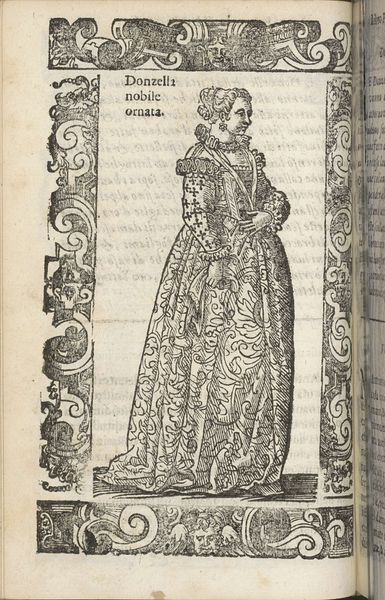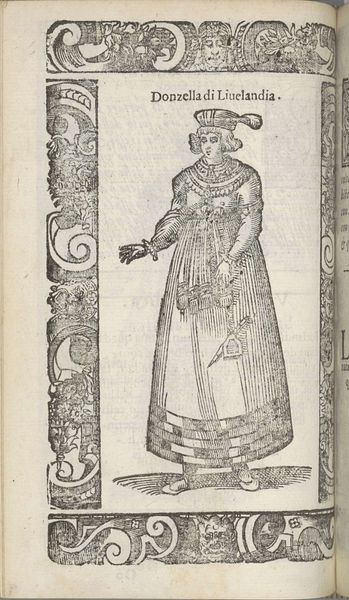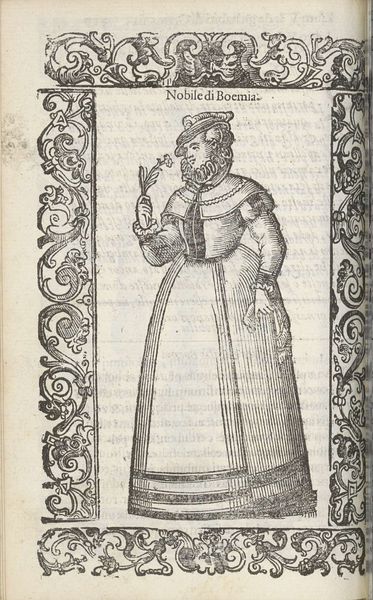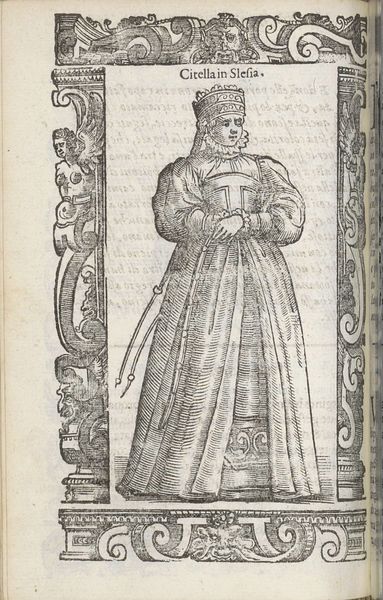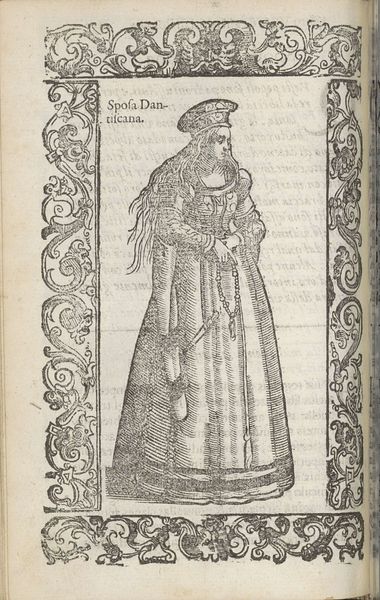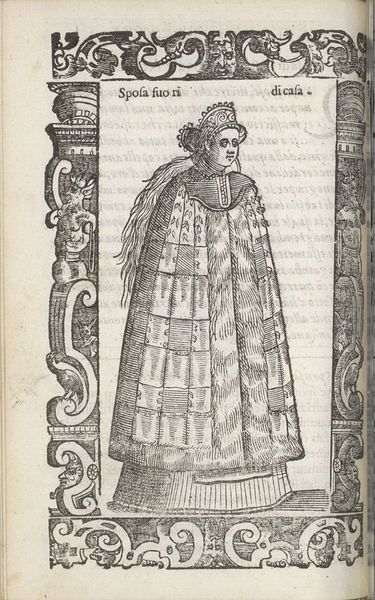
drawing, print, paper, ink, engraving
#
portrait
#
drawing
#
pen drawing
# print
#
mannerism
#
figuration
#
paper
#
11_renaissance
#
ink
#
engraving
Dimensions: height 167 mm, width 125 mm
Copyright: Rijks Museum: Open Domain
Curator: This engraving, dating from 1598, is entitled "Di Venetia & altrove" and attributed to Christoph Krieger. The print employs ink on paper. Editor: Wow, the sleeves! They're almost comical, they totally overwhelm the rest of her. It’s like she's trying to take flight! And look at that pattern on the dress; it feels so dense. Is that deliberate or an effect of the printing method? Curator: The piece exemplifies the Mannerist style, with its elongated figures and somewhat stylized, artificial presentation. That exaggeration might speak to gendered expectations around beauty and status at the time. Did these extravagant fashions truly represent female empowerment, or were they a tool of constraint, literally weighing women down and controlling their movements? The materiality of the engraving allows for precisely this play of dense patterning and minute detail to render surfaces and textures that reflect the fashion of the moment. Editor: Hmmm, constraint is one way to put it, though I see that look in her eyes as a certain kind of strength. All that finery—and yeah, those ridiculously huge sleeves— reads as powerful. Curator: It’s also interesting to consider where "Di Venetia & altrove"—"Of Venice and Elsewhere"—positions the sitter. What’s conveyed by showcasing regional costume this way? Are we meant to view this woman and her dress as unique to Venice or representing broader fashion trends of the time? Editor: Good question! Maybe "Elsewhere" indicates that fashion inspiration was traveling… She has a quizzical look about her... perhaps this fashionable getup is from "Elsewhere" than her native place and she doesn't know what to think of it. Maybe the artist wants us to wonder "Where is she from?". Curator: It raises compelling points about identity, representation, and the global exchange of cultural symbols during the late Renaissance. Fashion operates within a complex matrix of economic, social, and political forces. This woman’s image embodies a negotiation of these forces, both enabling and possibly restricting her agency. Editor: Okay, I get that. I guess my first impression was just "Wow! Sleeves!" followed by "Is she having fun, or is she suffering for fashion?" Curator: I appreciate your direct approach. Art invites diverse responses; yours prompts us to question whose voices are prioritized within art historical narratives and whose are often overlooked. Editor: Right. Now if you'll excuse me, I'm off to design my own sleeves—even bigger!
Comments
No comments
Be the first to comment and join the conversation on the ultimate creative platform.
